“The Color Purple” stars Danielle Brooks and Taraji P. Henson, our Heat Index, and more in EW's “The Awardist”
- Oops!Something went wrong.Please try again later.
- Oops!Something went wrong.Please try again later.
- Oops!Something went wrong.Please try again later.
"The Color Purple" stars have an emotional chat with EW about the new movie musical, we gauge who's up and down in the Oscars race, go inside the creation of that plane crash in "Society of the Snow," and more in the new issue of EW's "The Awardist" digital magazine.

Illustration by Sarah Madden
Danielle Brooks and Taraji P. Henson on striking gold in The Color Purple
Interview by Lester Fabian Brathwaite
Illustration by Sarah Madden
It’s hard to believe no one would cast Taraji P. Henson and Danielle Brooks — for anything, really, but especially for the new adaptation of The Color Purple. But they both went through a long audition process for the movie opening Christmas Day...even though Brooks, in addition to being an Emmy-nominated and SAG-winning actress, had earned a Tony nomination for the same role of Sofia in the 2015 Broadway revival of the musical, and Henson herself is an Oscar and multi-Emmy nominee who is a consistently rewarding presence on screen.
Brooks’ audition process lasted six months, and she even wrote director Blitz Bazawule a letter because she wanted this part so badly.
“No one really wanted us,” Henson tells EW. “If they want you, they hire you right away. We're not stupid, we know how it works.” But Henson credits Bazawule for believing in “all the little engines that could.”
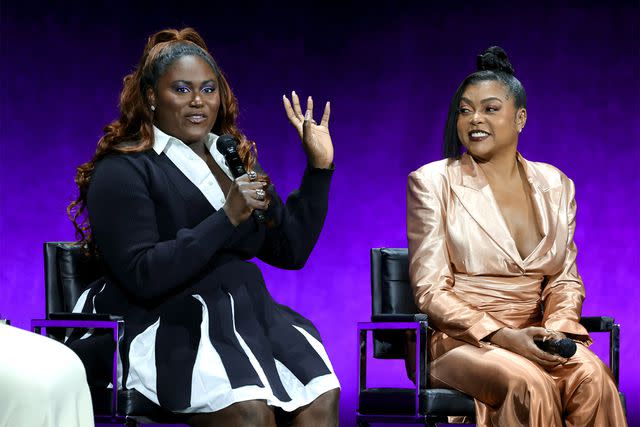
As talented as Brooks and Henson have proven themselves to be, they’ve had to face an uphill battle for the kind of recognition that Bazawule expects them to receive with the aid of this film. Days before the end of the actors’ strike, EW spoke to Bazawule who expressed how “happy” he was for his cast “that the world will finally see them in all their glory.”
“I'm watching people who have been due their flowers for a very long time,” Bazwaule said.
As the larger-than-life blues singer Shug Avery, Henson storms into town and immediately entrances Celie (Fantasia Barrino) and everyone else. But it is Brooks — as the vibrant and boisterous Sofia, who, after a brutal act of racial violence, is transformed into a meek shell of her former self only to ultimately find redemption — who might come out the clearest winner come awards season.
Yet, as artists, this is not and cannot be a competition for them, regardless of who gets nominated for what. The Color Purple has been an experience that has bonded them on a deeper level than is generally afforded by a big Hollywood production.
Here, Brooks and Henson discuss the sisterhood they developed with each other and the rest of the cast, their struggles as Black women in an often unforgiving industry, and the triumph of spirit in being a part of The Color Purple and its legacy.
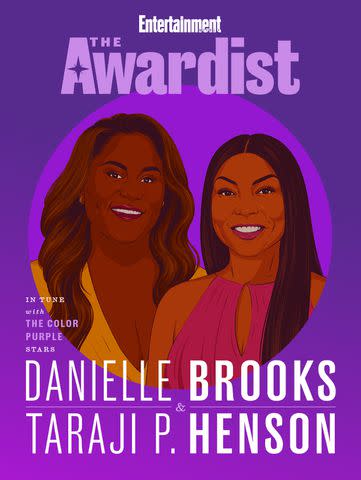
Illustration by Sarah Madden
ENTERTAINMENT WEEKLY: Danielle, how did your approach change between the Broadway show and the movie?
DANIELLE BROOKS: First of all, it's so much fun, man. It was so much fun. It's very rare that you get to do both theater and the movie and play the same character. So in the beginning when I was doing the Broadway show, it was just a bare stage. Nothing but wood, some chairs, and your imagination. I was using sheets to be a baby, folding it up like a baby. We didn't have a juke joint. I didn't have 10, 11 white men to attack me during the white mob scene. I didn't have that stuff. So I had to use my imagination, which is fun, but it can be limiting to what you can really do. So to get to do the film and actually hold a 10-pound baby in my hand and actually have 15 white men coming at me and actually be on a plantation and seeing the trees — thinking how many of our brothers and sisters were hanged on those trees — it changes the game. The story gets deeper.
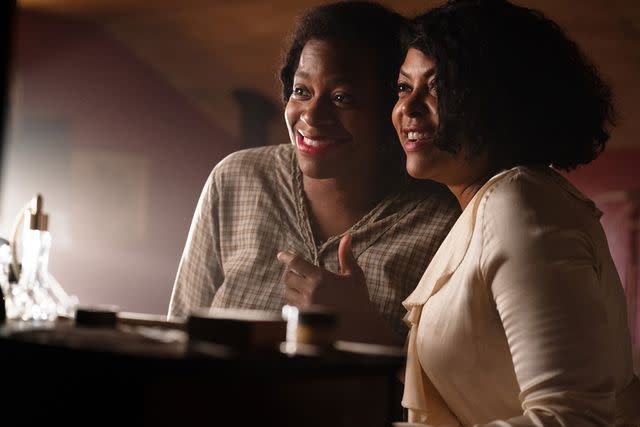
Ser Baffo
Fantasia Barrino and Taraji P. Henson in 'The Color Purple'I love how this film makes clear the love story between Celie and Shug. Taraji, can you talk about what you felt being a part of that?
TARAJI P. HENSON: We kind of shunned it a little bit in the original. And in this one, we broke that thing wide open because we've advanced in humanity where we are at a place finally where we are allowing people to love who the hell they want to love. So we were able to really explore that. And it wasn't even about sex. That was literally about love, the tenderness of love, and what that looks like. And I think that's just beautiful. And I think Blitz did an amazing job with that.
And it's necessary because I think when people think about love, sometimes the first thing they go straight to is sex. Sometimes love is not coming from your partner. That love, that unconditional love that you really, really need that's going to grow you and nurture you, it might very well come from a woman. It doesn't mean you have to lay down with this woman or have sex. It's the tenderness of love. Sex is fleeting, but the love is everlasting.
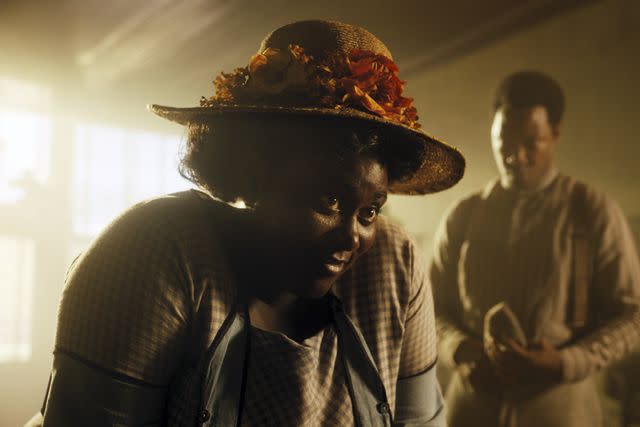
Everett Collection
Danielle Brooks in 'The Color Purple'Danielle, your character goes through such a huge emotional arc, from being this strong, powerful, inspiring woman and then there’s that awful attack and she goes to jail and comes out the other end changed. But she’s still able to find her smile, to find her joy at the dinner table with Celie and everyone. Can you talk about that scene, how important it is for Sofia to find her joy, and what you felt playing that?
BROOKS: I wrote in my journal, “After these 70-plus days of playing Sofia, I am depleted. I'm so tired.” It physically took a toll on me. It mentally took a toll on me, but I would do it again in a heartbeat because the importance of this character is so crucial to humanity, to who we are, to learning more about ourselves, to getting back up. How I got into all of the depths of Sofia truly was about calling on the ancestors for me. In my trailer, I would have about 20 pictures of women that inspired me or that I connected to with this character, like Fannie Lou Hamer, like Oprah, like Eliza Woods, who was a Black woman that was hanged [in 1886]. So I spent time with them. I called on them, my grandmother, my great-grandmother.
And to be honest, the scene in the jail and the scene at the dinner table, it felt like I had to perch myself in a graveyard full of my ancestors, of Black women, and listen to them whisper all of their pain and hurt. And I wanted people to really see us as Black women. We carry so much pain. There's so much hurt and it sometimes comes off as being angry or trying to be controlling, but there is so much going on inside of us and I wanted people to see the humanity of who we are.
The hard thing about what we do is when you do deep, heavy work, your body does not know that you’re acting. So when you release that thing, it's really hard to come back into it. So to have to keep doing it over and over, I had to lean on my cast.
HENSON: We felt so horrible for her.
BROOKS: I had to lean on them, but it was so worth it because at the end of the day, it's truly about people being seen, people being felt, people being heard.
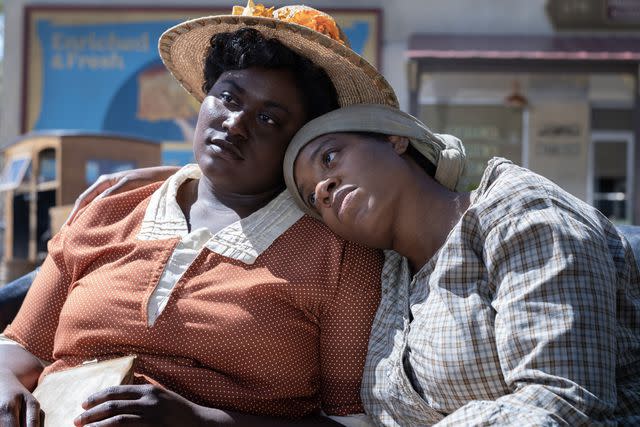
Eli Ade
Danielle Brooks and Fantasia Barrino in 'The Color Purple'How do you think this film might change the way people or the industry see you and what it means to have the opportunity to show all these different gifts that you have?
BROOKS: When I graduated Juilliard, I really didn't know how it was going to fit into Hollywood. I didn't know: Do I straighten my hair? Do I keep it curly? I can't change the color of my skin, so I'm going to rock with the dark skin and try to be proud of that. And do I lose weight? Do I gain weight? I didn't know and I stayed true to myself.
And then Orange Is the New Black came around and I was able to be authentically myself. No makeup, didn't have to wear no Spanx to work. I got to be myself. But not only that, I got to do that alongside four or five, six other Black women that looked like me that had similar energies. And it reminded me that there is room for all of us, but this industry is very difficult. And I did seven years on that show and struggled with not being recognized. When it came down to the Emmys, I felt unseen when I was doing great work, but just felt like not good enough.
So I had to do some personal deep internal work, like, why are we doing this? And so it's so encouraging when some young woman talks to you on the street and says, “I watched you on that show and seeing you made me think I could do this,” or, “I saw myself in you.” And it reminds me that's really what this all is about: helping other people find their purpose. And so I'm not going to sit here and say, I don't ever hope to get to stand on a stage and thank a bunch of people. I dream of that too. But at the end of the day, I know my worth. I validate myself, and my purpose is to be a light for someone else to find theirs. So as long as I stay focused on that, God's going to make a way regardless.
HENSON: I'm just going to say for me, being in this industry over two decades and being the age that I am, 53, and still being able to experience moments like this — not only just experience moments like this, but still surprise my fans with something else, you know what I mean? — is really beautiful, a beautiful part of this journey. And I'm grateful. I really am. I didn't see this for myself and it was Blitz who saw it in me and spoke into me. And when somebody speaks into you and they believe in you like that, you want to show up and you want to make them proud. He did that for all of us. He believed in all of us.
I've been doing this for two decades and there are times where I just want to quit because I'm tired of fighting. And what pains my heart is that I don't want to hear these babies having the same fight. My prayer is that the work and the fight and the struggle is to make it easier for them. And I'm like, how can I make it different? How can I make it better so that this little girl out there that's like, “I want to do that” — I don't want to have to hear her talk about the same things that me and my sisters have been fighting for so many years. This is bigger than me. It's bigger than us. If I'm not in a position to make it better for those coming behind me, what am I doing? What am I doing? Is it just for vanity? Art saves lives, art changes lives.
And so I get this position, this coveted position in this industry that never gives us a break. And sometimes I just get so enraged because it's like, “I've done all of this. Well, what about all of this I've done? That doesn't count for anything?” It's almost like every time I got to start from scratch. But I never compete with Black women. I'm never going to talk down to a Black woman. I can't.
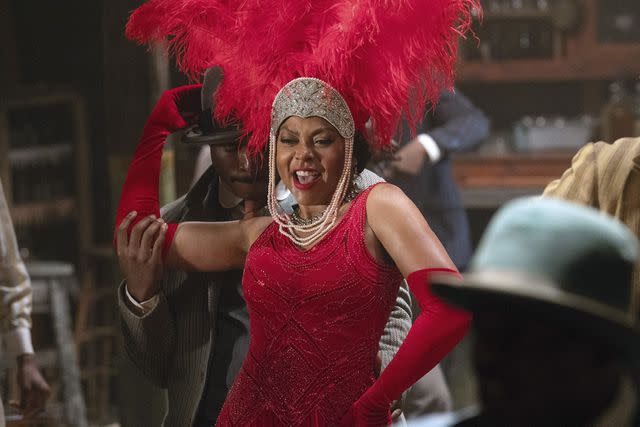
Everett Collection
Taraji P. Henson in 'The Color Purple'Can I just say, one of my favorite moments is at the Emmys when Viola Davis won and you two hugged each other (Henson was nominated for Empire, while Davis was nominated for How to Get Away With Murder). Like, that's what it's all about, right?
HENSON: And you know what bothered me? That was a headline. Why is that a headline? Oh God, “Taraji P. Henson hugs Viola Davis.” What else am I going to do? I'm happy for her. That's what I would do for any friend. It bothered me that that was a headline and you could hear the hush in the room. Everybody's like, “What?” You don't do that for your friends? This is what it should look like. This is how it should be. We root for each other. When you win, we all win.
This interview has been edited for clarity and length.
You can watch our full interview with Brooks and Henson above, and listen to EW's full interview with The Color Purple producer Oprah Winfrey and star Fantasia Barrino on the latest episode of The Awardist podcast, below.
Get the latest awards season analysis and hear from the actors, creators, and more who are contenders this season on EW's The Awardist podcast, hosted by Gerrad Hall. Be sure to listen/subscribe on Apple Podcasts, Spotify, Google Podcasts, or wherever you listen to your favorite podcasts, or via your own voice-controlled smart speaker (Alexa, Google Home).
Oscars Flashback
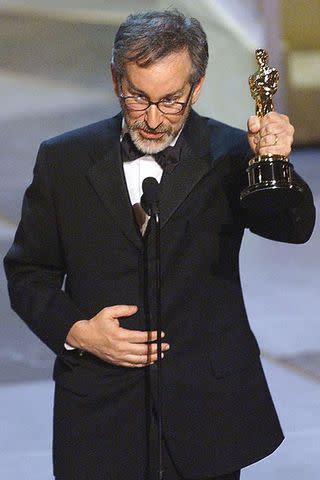
TIMOTHY A. CLARY/AFP via Getty
Steven Spielberg at the 71st Academy Awards in 1999"Am I allowed to say I really wanted this? This is fantastic."
—STEVEN SPIELBERG | BEST DIRECTOR, 1999 | SAVING PRIVATE RYAN
"
Heat Index | Contender or Pretender?
Nominations from major awards and critics groups, plus honors from some upcoming festivals including Santa Barbara and Palm Springs, have solidified serious contender status for some films, directors, and actors, while also making the odds of an Oscar nomination for some a little less likely. Here's a look at who's up and who's down right now.
By Joey Nolfi
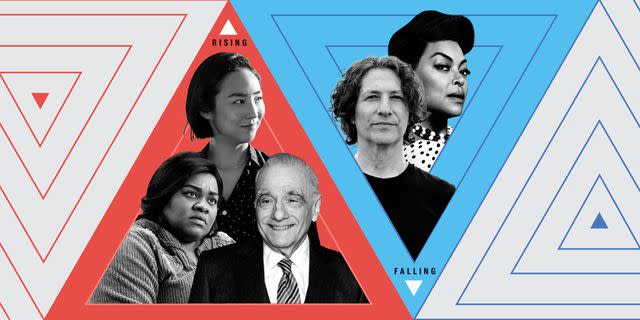
Getty Images; Focus Features; Warner Bros; A24
Who’s up:
PICTURE, ACTRESS, ACTRESS: Killers of the Flower Moon — On paper, Martin Scorsese’s 3.5-hour drama leads the race, hitting virtually all precursors thus far, from the Golden Globes to the Critics Choice Awards. Hitting every stride right alongside it are lead actors Leonardo DiCaprio and Lily Gladstone — the latter of whom appears to be a lock for the Best Actress trophy at this fledgling stage of the race.
PICTURE: Past Lives — Celine Song’s quiet drama had a big question mark over it at the start of the race, with many hoping that the project would be able to transcend its earlier-than-usual release date and sustain momentum through the year; luckily, it has, with Song even appearing among the crowded Best Director lineup at the Globes, and Greta Lee scoring a Best Actress nod from the same organization.
SUPPORTING ACTRESS: Da’Vine Joy Randolph, The Holdovers — Another remarkable showing on the precursor trail, Da’Vine Joy Randolph’s campaign has pushed her to the top of the Supporting Actress bracket, as she’s shown up everywhere there’s a nomination to be had in the run-up to the Oscars, and we expect SAG will carry the momentum in January.
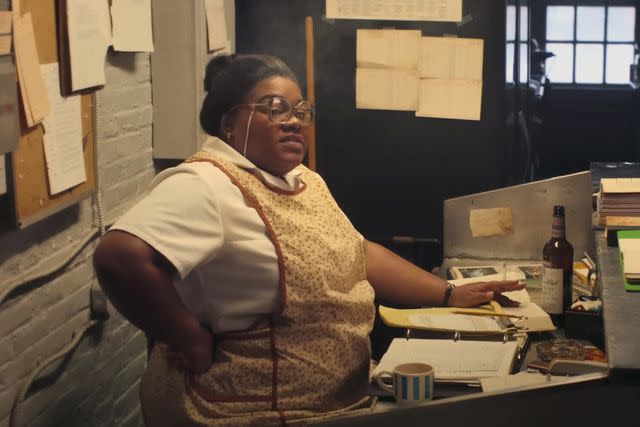
Everett Collection
Da'Vine Joy Randolph in 'The Holdovers'Who’s down:
SUPPORTING ACTRESS: Taraji P. Henson, The Color Purple — This one is tough to report, but Benjamin Button nominee Henson appears to be stumbling on the circuit, unjustifiably missing out on multiple high-profile nomination opportunities (Golden Globes, Critics Choice) to date. Though it’s more common in recent years, actors rarely score Oscar nominations without hitting the Golden Globes, Critics Choice, and SAG first, so here’s hoping the actors turn out in support of her breathtaking performance.
PICTURE: The Zone of Interest — Though it earned several Golden Globe nominations from the international-leaning voting body, Jonathan Glazer’s challenging drama about a Nazi commandant’s family building their dream home next to Auschwitz is a painful, difficult sit that’s proving to be a bit too upsetting to rack up a significant precursor report card so far.
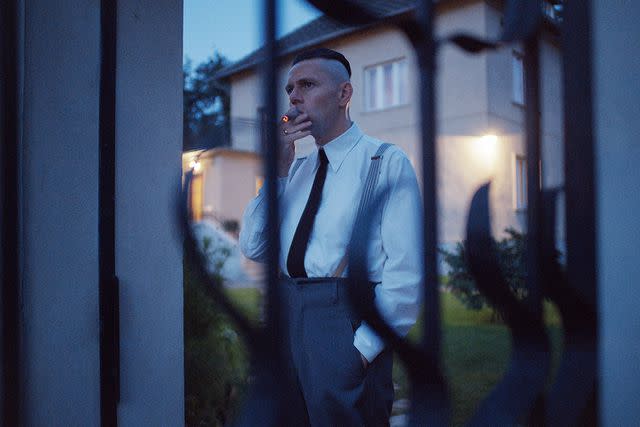
On the horizon:
With no major precursors left to announce in 2023, all eyes are on the industry-centric awards bodies to unveil their nominations, with both the DGA and SAG unions set to announce their year-end choices on Jan. 10. To date, we haven’t seen many nominations from industry-inclusive organizations with Academy crossover, save for the EFA (which went wild for Anatomy of a Fall). While the race might appear to be tipping in favor of Killers, the whole thing could take a sharp turn once voters with direct ties to the Academy speak up.
Emerald Fennell and Barry Keoghan unzip Saltburn's erotic cemetery scene
Keoghan was prepared to bare his soul as the lead of Saltburn — then director Fennell asked him to bare more. By Lauren Huff
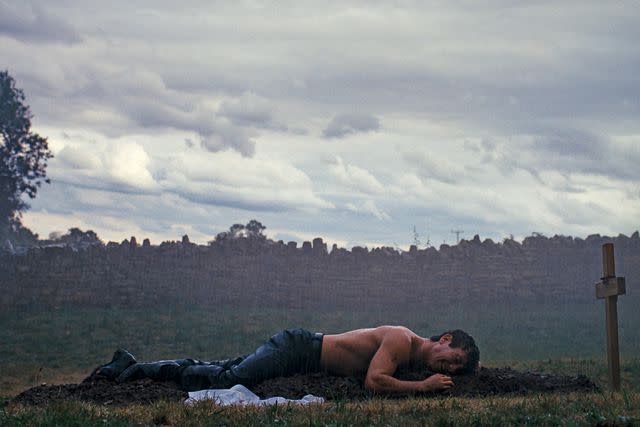
Amazon Prime
Barry Keoghan in 'Saltburn'Warning: This article contains spoilers from Saltburn.
When it came time to shoot this eye-popping Saltburn scene (below), something was bothering writer-director Emerald Fennell. Initially, the script only called for Barry Keoghan’s Oliver to finger and kiss the freshly dug grave of his beloved Felix (Jacob Elordi). But on the day of filming, Fennell changed her mind. “I spoke to Barry in the morning, and I just said, ‘I don’t know, Barry. I think that he would...unzip,’” she recalls with a devilish smirk. “And Barry just said, ‘Yup.’”
“She plants seeds, Emerald, you know what I mean?” Keoghan says of his director. “She knows that they're going to grow, these seeds, especially when she plants them with me. But it is a testament to Emerald and having that idea and me meeting it with, to be honest, no questions. I was totally on board for it.”
Armed with Keoghan’s gung ho spirit and a rain machine, they shut down the set. Just Fennell, Keoghan, cinematographer Linus Sandgren, and script supervisor Sam Donovan were permitted to watch the star shtup dirt… Not that the shtupping was the point, says Keoghan.
“For me, it wasn't about fecking the grave, it was more about I don't know what to do with this obsession; it’s making me confused and making me unhuman in a way,” the Irish actor says. “It was a total discovery for him, I think. And it was sad. It was very, very sad.”
Fennell admits that though the resulting scene is at once “shocking and darkly funny and uncomfortable,” at its heart, it “had to be a moment of profound despair — an almost relatable moment of grief over this completely forever unrequited love.” As such, the shot lingers and lingers (and lingers) on Keoghan and his, ahem, mounting despair.
Though Fennell contends that “the awful length of it is what makes it so powerful,” there was some early pearl-clutching behind the scenes. “People said, ‘Oh, we know what’s going to happen. Why do we have to watch it?’ And I said, ‘Watching it is the point! Not cutting away is the point. You have to sit in your discomfort — you can only understand it if you sit with it.’”
Click here to read the full version of this story, which appears in EW's 2023 Awardist Oscar Kickoff print issue, featuring American Fiction on the cover.
How Society of the Snow director J.A. Bayona and his team recreated the Andes mountains and that horrific plane crash
Go behind the scenes of the real-life crash that left survivors stranded in the freezing-cold mountains of Argentina for almost three months. By Gerrad Hall
At the heart of J.A. Bayona's Society of the Snow are the victims and survivors of a 1972 plane crash in the snow-covered Andes mountains.
But recreating those horrific events was no small task, as seen in a new behind-the-scenes featurette above. Bayona — who previously directed The Impossible, about the 2004 Indian Ocean tsunami — knew what it took to film in chaotic conditions, but he tells EW that "every day was a challenge" on the set of his latest, some of which was filmed in Argentina at the site of the real plane crash, now called the Valley of Tears.
"In order to capture the reality of the situation, we were shooting in similar conditions," Bayona explains. "So we shot in real locations with snow... The difficulties of shooting a movie versus the mountain: The mountain always tells you what you can do. The shooting plan was changing nonstop because the weather was changing nonstop."
As for that crash, Bayona wanted it to be a "massive scene, like being with the characters inside the plane." As seen in the video, the production created three different planes to use for various aspects of filming the scene, which involves one passenger being sucked out of the plane after it hits the tip of a mountain, splitting the plane in two, while others suffered major injuries upon impact.
"It's a very physical scene. It's a scene that needs to hurt, it needs to provoke the same emotions they went through. It's almost like a horror [movie]," Bayona says.
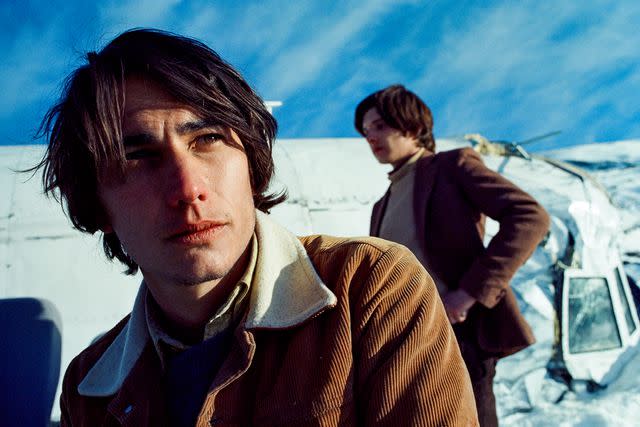
Netflix
Enzo Vogrincic in 'Society of the Snow'Having met some of the survivors and families of the victims, the actors knew intimate details of what the passengers experienced. But when it came to the actual filming of the crash, star Enzo Vogrincic, who plays the movie's narrator, Numa Turcatti, says he felt it was a chance to lighten the mood on an otherwise difficult shoot.
"That was the most fun thing that we recorded. We had this plane that was moving. There was a little wind and your friends would just go and fly behind you," he recalls. "The most incredible thing about acting in the movies is the transformation of what you did and the end product. I insisted that we had a lot of fun in that scene, and the result was just tremendous."
Watch the featurette above for more on how they brought this true story to life. Society of the Snow is in select theaters on Dec. 22 and available to stream Jan. 4 on Netflix.
Check out more from EW's The Awardist, featuring exclusive interviews, analysis, and our podcast diving into all the highlights from the year's best in TV.
Related content:
Barbie, Oppenheimer lead 2024 Golden Globes nominations: See the full list
See top 2024 Oscars contenders for Best Picture, Actor, Actress, and more
Awards season calendar 2024: See key show dates for Oscars, Emmys, Golden Globes
Read the original article on Entertainment Weekly.
